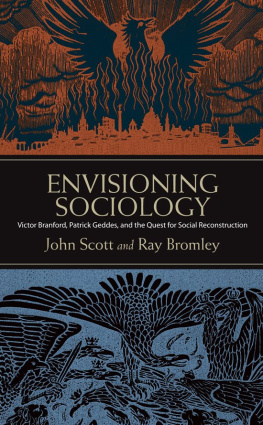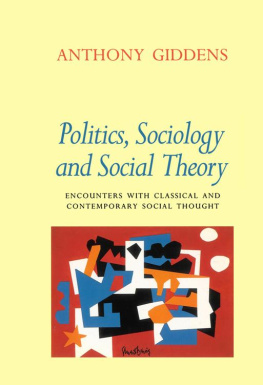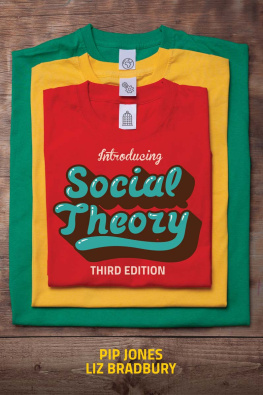First published 1977
This edition first published in 2015
by Routledge
2 Park Square, Milton Park, Abingdon, Oxon OX14 4RN
and by Routledge
711 Third Avenue, New York, NY 10017
Routledge is an imprint of the Taylor & Francis Group, an informa business
1977 Martin Howarth-Williams
All rights reserved. No part of this book may be reprinted or reproduced or utilised in any form or by any electronic, mechanical, or other means, now known or hereafter invented, including photocopying and recording, or in any information storage or retrieval system, without permission in writing from the publishers.
Trademark notice: Product or corporate names may be trademarks or registered trademarks, and are used only for identification and explanation without intent to infringe.
British Library Cataloguing in Publication Data
A catalogue record for this book is available from the British Library
ISBN: 978-0-415-72731-0 (set)
eISBN: 978-1-315-76997-4 (Set)
ISBN: 978-1-138-78407-9 (Volume 57)
eISBN: 978-1-315-76342-2 (Volume 57)
Publishers Note
The publisher has gone to great lengths to ensure the quality of this reprint but points out that some imperfections in the original copies may be apparent.
Disclaimer
The publisher has made every effort to trace copyright holders and would welcome correspondence from those they have been unable to trace.
First published in 1977
by Routledge & Kegan Paul Ltd
39 Store Street,
London WCIE 7DD,
Broadway House,
Newtown Road,
Henley-on-Thames,
Oxon RG9 1EN and
9 Park Street,
Boston, Mass. 02108, USA
Printed in Great Britain by
Thomson Litho Ltd
East Kilbride, Scotland
Martin Howarth-Williams 1977
No part of this book may be reproduced in
any form without permission from the
publisher, except for the quotation of brief
passages in criticism
British Library Cataloguing in Publication Data
Howarth-Williams, Martin
R.D. Laing
1. Laing, Ronald David 2. Psychiatry
616.8900924 RC461 77-30031
ISBN 0-7100-8624-5
You will not find on this planet a more fascinating man than Ronald Laing (Leary, 1970).
This book attempts to be an exercise in dialectical intelligibility. Naturally, then, the important terms cannot be defined in advance, but must be apprehended in the activity of reading. Nevertheless, it is in order to give the reader some idea of what is in store.
The bulk of the book (which was written as a thesis for Keele University Sociology Dept, and financed by the Social Science Research Council, to whom I am deeply indebted) consists of a review of the work of R.D. Laing. I have taken the term work in its broadest possible sense; that is, I have included, where relevant, any source of statements that are unquestionably from Laing himself. These involve a number of media: in addition to one or two unpublished texts and interviews, I have used longplaying records, tapes of lectures, transcripts of television appearances, films, and even, on occasion, my own personal recollections of hearing Laing talk under informal conditions.
The structure of the review calls for some preliminary comment. The overriding theoretical orientation employed in the review is that of Sartre, as expounded in La Critique de la raison dialectique (1960). Indeed, the aim here is much the same as Sartres stated aim for his proposed second volume of the Critique: I will simply try to show the dialectical intelligibility of a movement of historical temporalization (Sartre, 1974b). In our case, the historical temporalization is the span of Laings career.
Following the ProgressiveRegressive Method of Sartre, the review is presented in three moments. First, an analytic moment, in which all the sources are apprehended, in approximate chronological order, and, by a comparative reading of one source against another, breaks down this unstructured serialized collectivity Laings work into discrete stages. A stage is determined by two factors: chronological order and, more important, the mutual coherence of its contents.
Each stage seven are isolated is presented, in this analytic moment of review, as a period of theoretical stasis. A multiplicity of texts is unified, nondialectically, and an essence extracted: this essence comprises the characteristic theoretical feature of that stage.
Recognizing, however, that progress in theoretical practice, as in any other form of practice, comes about through the transcendence of contradiction, the second moment of the review goes back, regressively, to discover contradictions inherent in each stage, and attempts to illuminate the historical development, so far only given metaphorically as successive stages, as a flow of transcendences. This second, synthetic, moment of review thus negates the negating stasis of the first moment, and reaffirms, at a higher level of inner clarity, the living flux of the totalizationinprocess which is Laings work. It is recognized, of course, that this development is uneven, and not linear, nor is it purely theoretical. A certain structuration of the stages is attempted, and certain biographical, historical and other overdeterminations are explored.
The analytic and synthetic moments thus comprise , respectively.
attempts to grasp Lainqs work as a totality. But this is not to be thought of as an inert summary. For we have taken advantage of the totalizing perspective of this chapter to look back, once more, and to examine some of the more prominent philosophical influences upon Laings work, as well as the extraction of certain recurrent yet developing themes across the span of his work. These thematic considerations notwithstanding, this book concentrates on Laing as a theorist of the human scene? it is his theoretical methodology that is focused upon here, more than the substantive empirical side of his work. In particular, little attempt is here made to relate Laings work as a therapist to either the theory or practice of orthodox Freudian psychoanalysis. This is partly because I felt I did not have sufficient familiarity with the latter to be worthy of the task, and partly because Laing never, ever, writes about how he conducts therapy. This, however, has not prevented some writers from attempting the task.
Throughout the review, we have attempted to show that there is so to speak a guiding light, the grasping of which illuminates the whole enterprise of Laings work. This can be identified by the concept of Intelligibility. There is found to be a thread running through all the stages, concerned with this notion of Intelligibility. At certain points in his career, Laings use of the term corresponds with Sartres, and thus also with the present writers. This book, or at least the review portion of it, consists of dialectical intelligibility as it were applied to itself and its precursors, as manifest over the span of Laings career. Laing appears to have stopped using the term; a critique is included of Laings most recent pronouncements, particularly in respect of politics and religious experience.








